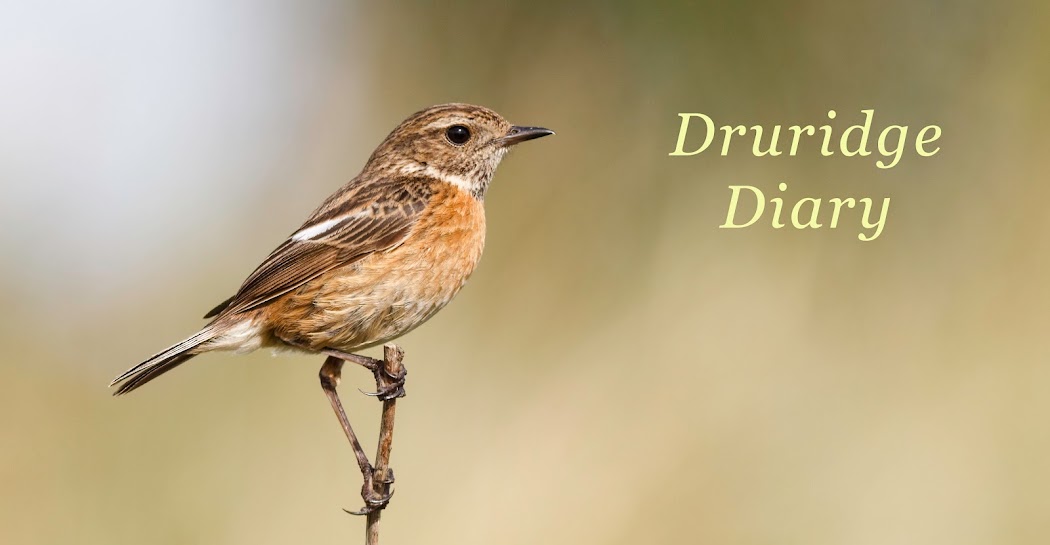Migration has begun...
Waders are on the move, at Druridge this was evident by large numbers (up to 76) dunlin on the beach midweek as well as the first returning sanderling. On the Budge fields this weekend there has been up to two green sandpiper, three wood sandpipers and five common sandpipers. Pectoral and curlew sandpipers have also been reported but not seen by yours truly.
Elsewhere, migrants like pied flycatchers and black restarts have been seen at coastal places.
Tonight, as I was watching the sandpipers on the Budge field, as well as a water rail out in the open, a great egret appeared on the fields, scattering the waders on it's arrival.
 |
| Great Egret feeding on the Budge fields |
 |
| and in flight |
Short video of Great Egret - click to enlarge.
I left the egret feeding on the Budle fields, but as I walked back to my car, it flew south overhead and continued to circle about before heading back over the Budge hide.
 |
| Circling above the Budge hide |
Since my last post, I've been away to Dumfries and Galloway for a long weekend of birds, butterflies, bikers and lighthouses.
 |
| One of many Tysties nesting in the harbour wall at Poertpatrick - our base for two nights. |
I've also done a couple of short seawatches, the highlight of which was a single sooty shearwater south on Thursday evening. Janet and I had a quick look around the patch on Friday evening and were amazed by the number of feral greylags - Druridge Pools had become like Hauxley, or a goose farm. The numbers of these and feral canada geese breeding in the area must be having some ecological impact on native species.
 |
| Greylag Goose |
 |
| Lots of Greylag Geese |
It was nice to see great-crested grebes with young on the big pool as well as the increasingly scarce pochard.

































